Manufacturer, Supplier & Exporter of
a wide range of Dyes, Pigments & Food Colours
Basic Dyes
Before going further let us first understand what is Basic Dyes?
Basic dyes, also known as cationic dyes, are a type of dye that produces colour due to the cationic part of the molecule. They are essentially salts of organic bases and have a positive charge, which is different from other dyes that have a negative charge or no net electric charge.
One of the most significant characteristics of basic dyes is their historical importance as the first synthetic textile dyes, starting with mauve. They are also known for their wide range of shades, vibrant colours, and compatibility with synthetic, anionic materials. Basic dyes are particularly useful for colouring synthetic, cationic materials, such as acrylics, as other types of dyes may yield pale colours when used with these materials.
Basic dyes are anionic that are ideal for materials that are chemically compatible, producing long-lasting and vibrant colours that other types of dyes cannot achieve. They are commonly used for dyeing textiles, paper, and leather, as well as in the printing industry. Basic dyes are also utilized in the biological sciences to stain cells and tissues for microscopic examination.
In terms of properties, basic dyes are soluble in water and have high affinity towards materials with a negative charge, such as silk and wool. They are also sensitive to light and heat, making them susceptible to fading and degradation over time. Additionally, basic dyes are generally not suitable for dyeing natural cotton and other cellulosic fibers due to poor absorption and poor wash fastness.
Overall, basic dyes are an important type of dye with unique properties that make them ideal for specific applications, particularly in the textile and printing industries.
To find the right Basic Dye and dyeing procedure for your business, we invite you to explore one of the best Basic Dyes Manufacturers in India i.e. Megha International. We offer a diverse collection of best Basic Dyes for wool and consumables that cater to various requirements. Moreover, we keep pace with the advancements in digital textile printing techniques to ensure that our customers have access to the latest technologies. For detailed information on the product Download Basic Dyes PDF
Are you looking for Basic Dyes? Transform your materials into vibrant masterpieces!
Buy High quality Basic Dyes at Best Price - Megha International
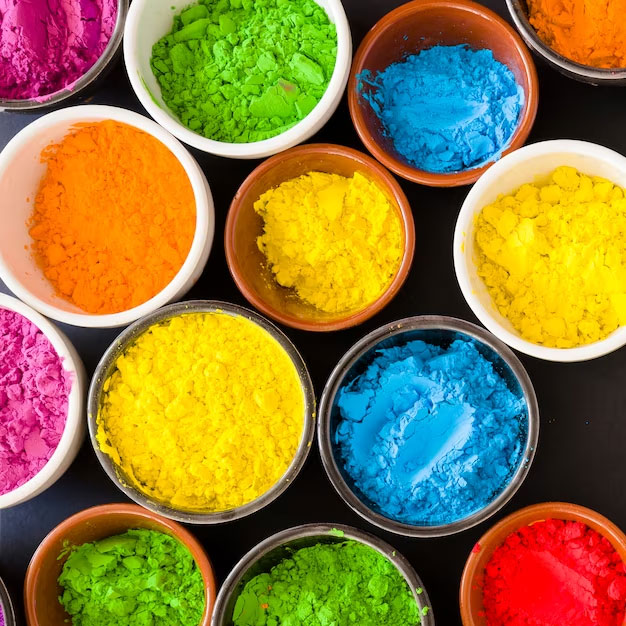
Basic Dyes Manufacturing Process
The manufacturing process for basic dyes involves several steps, including synthesis, purification, and formulation.
is the synthesis of the organic base, which is typically done by reacting an amine or ammonia with a halogenated hydrocarbon. The resulting organic base is then quaternized by reacting it with an alkyl halide or dimethyl sulfate. This process converts the organic base into a salt with a positively charged nitrogen atom, giving it its cationic property.
is the purification of the basic dye. This involves removing any impurities, such as unreacted starting materials or by-products, through a series of techniques such as filtration, crystallization, and distillation.
the basic dye is formulated into a final product. This involves mixing the dye with a solvent, such as water or ethanol, and any necessary additives, such as dispersants or surfactants, to improve the dye’s solubility and stability. The formulation process also includes adjusting the dye concentration and pH to optimize its dyeing properties.
is then tested for colour strength, shade, and other performance characteristics to ensure it meets the required specifications. Once approved, the basic dye is packaged and shipped to customers for use in various applications, such as dyeing textiles or staining biological specimens.
Types of Basic Dyes
Some common Basic Dyes examples include:
| Basic DYES | ||||||||||||
| On Paper 0.5% | On Acrylic Fabric 2% | Product Name | C.I. Name | CAS NO. | Light | Washing | Water | Dischargebility | Basic Dyes uses | Price | MSDS | TFDS |
| AUROMINE O CONC | Yellow 2 | 2465-27-2 | 2 | (2-3) | – | P | Textile dyeing, paper coloring, biological staining | |||||
| CRYSODINE Y & R | Orange 2 | (532-82-1 ) | (4-5) | (4-5) | – | P | Textile dyeing, inkjet printing | |||||
| BASIC CHRYSODINE R | Orange 1 | 574-69-6 | (4-5) | (4-5) | – | P | Textile dyeing, paper coloring, biological staining | |||||
| Basic Brown G 130% | Brown 1 | 10114-58-6 | (3-4) | (4-5) | – | P | Textile dyeing, leather dyeing | |||||
| RHODAMINE B 550% | Violet 10 | 81-88-9 | (3-4) | (4-5) | – | P | Textile dyeing, inkjet printing, biological staining | |||||
| BASIC BRILL GREEN CRYSTAL | Green 1 | 128-58-5 | 2 | (2-3) | – | P | Textile dyeing, biological staining | |||||
| MALACHITE GREEN XLS/PDR LIQUID | Green 4 | 569-64-2 | (3-4) | (4-5) | – | P | Textile dyeing, biological staining | |||||
| METHYL VIOLET CSTL/PDR D | Violet 1 | 8004-87-3 | (2-3) | 4 | – | P | Textile dyeing, inkjet printing, biological staining | |||||
| Magenta Crystals 100% | Violet 14 | 632-99-5 | (2-3) | 3 | – | P | Textile dyeing, biological staining | |||||
| METHYLENE BLUE PDR WITH ZINC & ZINC FREE | Blue 9 | 122965-43-9 | (2-3) | 2 | – | P | Textile dyeing, biological staining | |||||
| Victoria Blue B 100% | Blue 26 | 2580-56-5 | (2-3) | 2 | – | P | Textile dyeing, paper coloring, biological staining | |||||
| BISMARK BROWN Y & R | BASIC BROWN 4 | 8005-78-5 | 1 | 2 | – | P | Wood staining, furniture refinishing, natural fiber dyeing | |||||
| METHYL VIOLET CSTL/PDR D | BASIC VIOLET 1 | 8004-87-3 | 1 | 2 | – | P | Microscopic staining, biological research, histology | |||||
| CRYSTAL VIOLET CSTL/PDR LIQUID | BASIC VIOLET 3 | 548-62-9 | 1 | 2 | – | P | Textile dyeing, fabric printing, silk-screening | |||||
| ETHYL VIOLET CSTL/PDR LIQUID | BASIC VIOLET 4 | 2390-59-2 | 1 | 2 | – | P | Ink production, marker coloring, stationery manufacturing | |||||
Basic Dye Properties / Characteristics - Basic Dyes Manufacturer in India
Basic Dyes for cotton possess a number of distinct properties and characteristics that make them well-suited for various dyeing applications. These properties of Basic Dyes include:
- Cationic nature: Basic dyes are called cationic dyes because the cationic part of the molecule is responsible for colour production. The positive charge on the nitrogen atom of the organic base enables it to form electrostatic attractions with negatively charged materials, such as synthetic cationic fibers, resulting in strong and vibrant colours.
- Wide range of shades: Basic dyes are known for their wide range of shades, including bright and vibrant colours that are difficult to achieve with other types of dyes. They can produce shades ranging from deep blues and purples to bright pinks, oranges, and yellows.
- High affinity for synthetic materials: Basic dyes have a high affinity for synthetic, cationic materials, such as nylon, polyester, and acrylics, due to their cationic nature. This makes them ideal for dyeing synthetic fabrics, as they produce bright and long-lasting colours that other types of dyes cannot achieve.
- Sensitivity to light and heat: Basic dyes are sensitive to light and heat, which can cause them to fade or degrade over time. This limits their use in applications that require exposure to sunlight or high temperatures.
- Solubility in water: Basic dyes are highly soluble in water, making them easy to dissolve and mix with other substances. This property is important in the formulation of the dye and its application to the substrate.
Overall, basic dyes have unique properties that make them well-suited for specific applications, such as dyeing synthetic materials or staining biological specimens. However, their poor wash fastness and sensitivity to light and heat limit their use in certain applications where these properties are important.

Advantages of Basic Dyes
Basic dyes offer several advantages that make them useful in various applications. Some of the key advantages of basic dyes include:
- Vibrant colours: Basic dyes are known for producing bright and vibrant colours, making them popular for dyeing synthetic materials. They offer a wide range of shades that are difficult to achieve with other types of dyes.
- Compatibility with synthetic fibers: Basic dyes have a high affinity for synthetic, cationic materials, such as nylon, polyester, and acrylics, making them ideal for dyeing synthetic fabrics. They produce long-lasting colours that do not fade easily, even after repeated washing or exposure to sunlight.
- Easy to use: Basic dyes are highly soluble in water, making them easy to dissolve and mix with other substances. They are also easy to apply to the substrate, making them a popular choice for colouring various materials.
- Cost-effective: Basic dyes are relatively inexpensive to manufacture and use, making them a cost-effective choice for dyeing synthetic materials.
- High dye penetration: Basic dyes have a high degree of dye penetration, which allows them to colour the entire thickness of the substrate evenly.
- High colour yield: Basic dyes have a high colour yield, meaning that they can produce intense and vibrant colours using a relatively small amount of dye.
Overall, basic dyes offer several advantages that make them a popular choice for dyeing synthetic materials. Their vibrant colours, compatibility with synthetic fibers, ease of use, and cost-effectiveness make them a valuable tool in various applications.
Application of Basic Dyes
Direct dyes are commonly used to dye cellulosic fibers such as cotton, linen, and rayon. They can be used in a variety of dyeing methods, including immersion dyeing, padding, or printing. Some of the common applications of direct dyes include:
- Textile dyeing: Direct dyes are widely used to dye textiles such as clothing, home furnishings, and upholstery.
- Paper dyeing: Direct dyes can be used to dye paper and other cellulose-based materials, which can be useful in the production of colourful paper products.
- Leather dyeing: Direct dyes can also be used to dye leather, which can be useful in the production of colourful leather products.
- Food colouring: Some direct dyes are used as food colorants, particularly in the manufacturing of candy and other confectionery products.
- Inkjet printing: Direct dyes can be used in inkjet printing to produce high-quality, vibrant prints on cellulosic substrates.
Overall, the versatility and ease of use of direct dyes make them a popular choice for a wide range of applications in various industries.
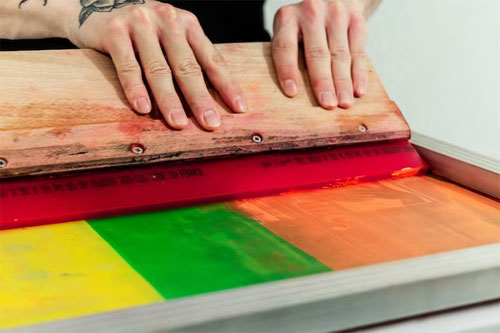
Textile Colouring
Reactive dyes for cotton and other natural fibers are widely utilized in the textile industry for their colouring properties on fabrics such as cotton, wool, silk, and others. They are also used to dye synthetic fibers such as polyester, nylon, and acrylic.
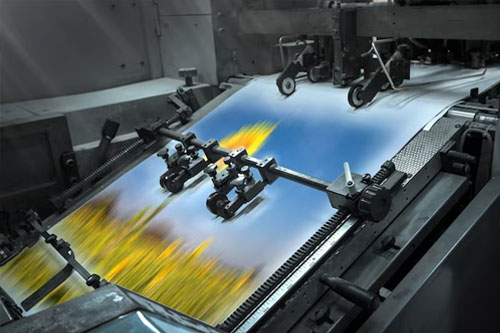
Printing
Reactive dyes can be used to print designs on fabrics using different printing techniques such as screen printing, roller printing, and inkjet printing.
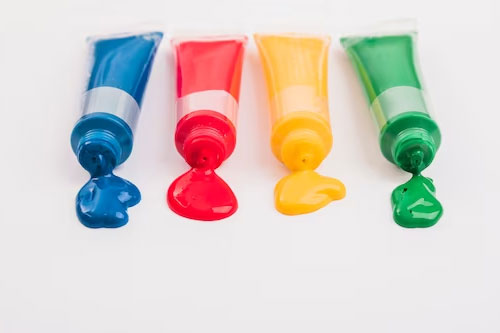
Paper Colouring
Reactive dyes are also used to colour paper and paper products. They are used in the production of paper for books, magazines, and other printed materials.
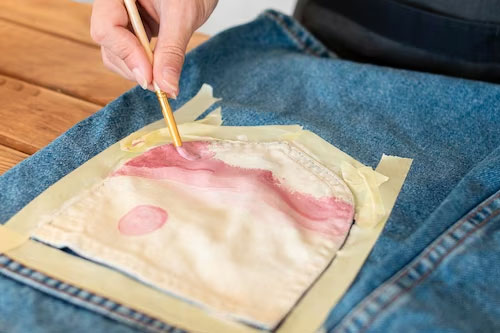
Leather Colouring
Reactive dyes are used to colour leather and leather products such as shoes, bags, and belts.
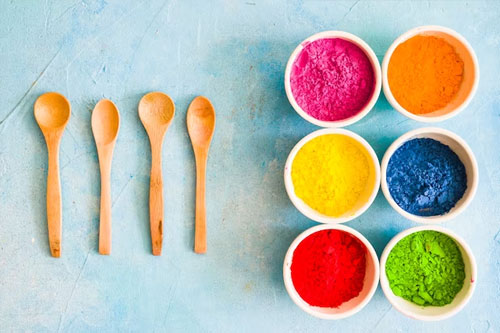
Food Colouring
Some reactive dyes are also used as food colouring agents, although their use in food is highly regulated and limited.
Overall, reactive dyes are versatile and widely used in various industries for their excellent colour fastness and durability.
About Megha International
Looking for a Basic Dyes Exporter for brazil?
Megha International (ISO 9001: 2008) Established in the year 1995, at Mumbai, is the best basic dyes manufacturers in India that offers an extensive range of dyes in national as well as international markets. Our research and development team carries out constant studies to develop products that reliably set us apart from our competitors and serve our clienteles best. With a remarkable focus on innovation and leveraging new-age expertise, we endeavour to sustain and develop a leading organization on a global scale. The company is a top Basic Dyes manufacturer in India, and is striving to deliver the finest quality of products to the consumers, while being environmentally sensitive.
Market Area of Megha International
As a prominent Basic Dyes supplier, Megha International is proud to export Basic Dyes in a wide range of countries across the globe. Our reach extends to many countries in Asia, including China, Vietnam, Singapore, Thailand, Malaysia, Korea, Philippines, Japan, and Indonesia.
We also serve clients in the Middle East, such as UAE, Saudi Arabia, Kuwait, Qatar, Iraq, and Iran.
In North Africa, we have clients in Algeria, Morocco, and Tunisia, while in Europe, we offer our services to Russia, the UK, France, Italy, Germany, the Netherlands, Romania, and Poland.
In South America, we serve clients in Brazil, Argentina, Colombia, Peru, and Guatemala, as well as in Central America, including Mexico, Costa Rica, and Honduras.
Finally, we also provide our services to clients in the United States and Chile. No matter where our clients are located, we are committed to delivering high-quality dyes and exceptional customer service.
Frequently Asked Question about Vat Dyes
Basic dyes are cationic dyes, which means that the cationic part of the molecule is responsible for colour production. They are essentially salts of organic bases, and the basic dye molecule has a positive charge.
Acidic dyes are anionic, meaning they have a negative charge, while basic dyes are cationic and have a positive charge. This difference affects their compatibility with different materials and their application methods.
Basic dyes are primarily used to dye synthetic, cationic materials, such as nylon, polyester, and acrylics. They can also be used to dye paper, leather, and biological specimens.
Basic dyes are typically applied to materials by dissolving them in water and then immersing the material in the dye solution. They can also be applied by spraying, padding, or printing.
Basic dyes can be permanent and long-lasting when used on synthetic, cationic materials. However, they may fade over time if exposed to sunlight or harsh chemicals.
Basic dyes are generally safe to use, but they can be toxic and should be handled with care. They should not be ingested or inhaled, and protective equipment should be worn when handling them.
Basic dyes should be disposed of in accordance with local regulations. They should not be poured down the drain or disposed of in the trash.
Basic dyes can be mixed with some other types of dyes, such as acid dyes, to produce different colours. However, they are not compatible with all types of dyes.
Basic dyes should be stored in a cool, dry place away from direct sunlight and heat sources. They should be kept in their original containers and labelled clearly.
The shelf life of basic dyes can vary depending on the specific dye and how it is stored. In general, basic dyes have a shelf life of several years when stored properly.
Basic dyes are more effective because their positive charge allows them to bind to the negatively charged bacterial cell wall, which is primarily made up of peptidoglycan. This binding results in the dye being retained within the bacterial cell, allowing for better visualization of the bacteria under a microscope.
Acidic dyes and basic dyes are two different types of dyes used for colouring different materials. The main difference between them is the charge of their molecules. Acidic dyes are anionic, meaning they have a negative charge, while basic dyes are cationic and have a positive charge. This difference affects their compatibility with different materials and their application methods.
